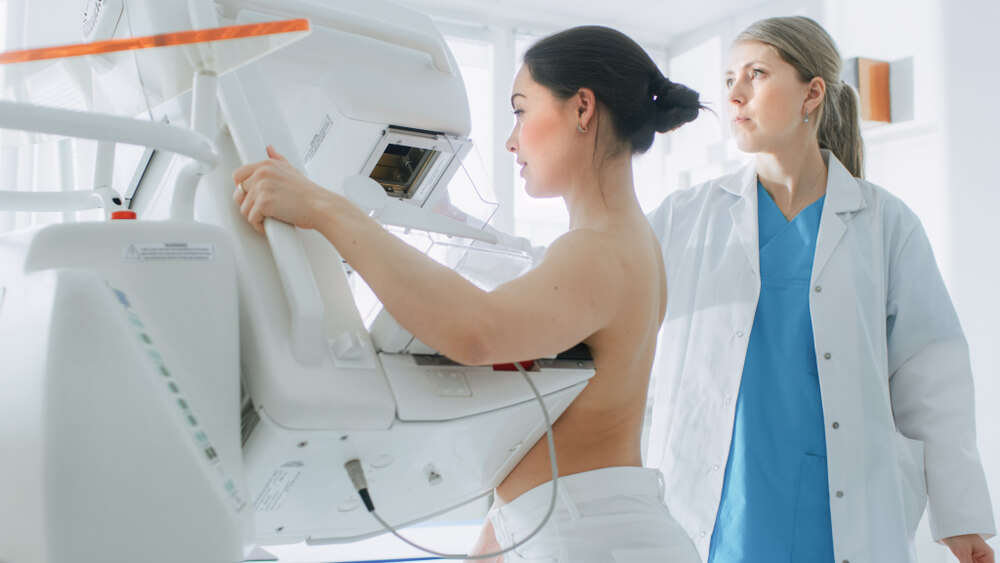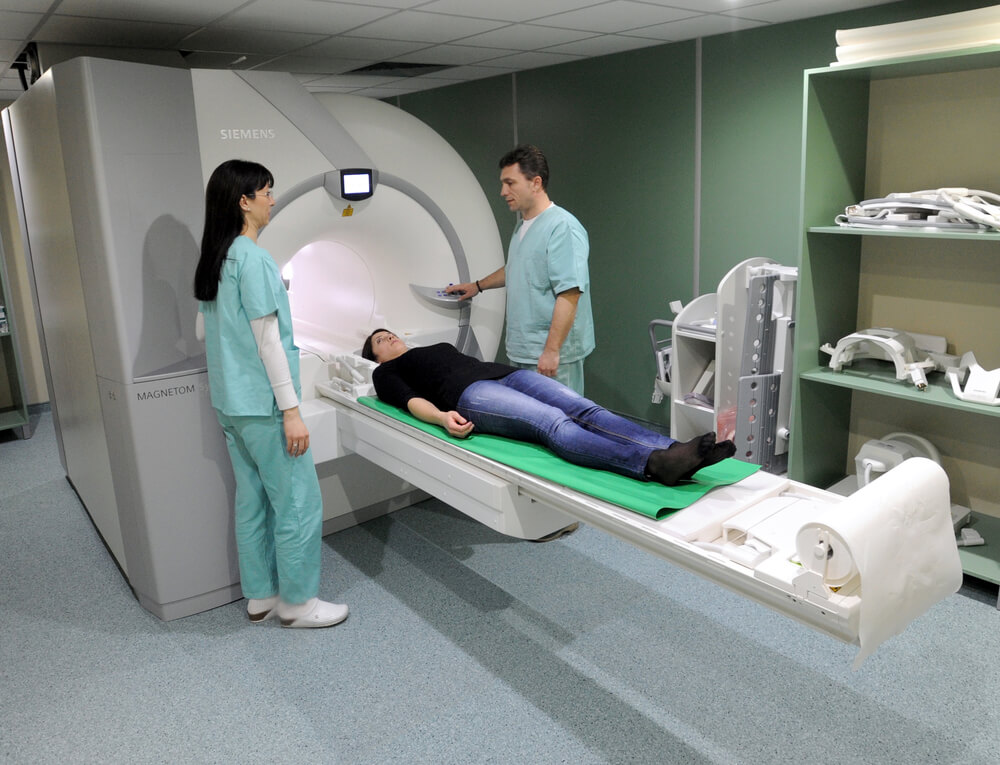Breast Care Center Miami is a comprehensive breast care center that helps women learn more about their breast health, prevent cancer and detect tumors in their early stages. It also offers treatment plans and office procedures for women with cancer or those who have a high risk of developing cancerous tissue.
This article focuses on our breast evaluation center services. It explores how we can help our patients evaluate their breasts for abnormal tissue or cysts and the breast evaluation services they can book with our team.
Why Breast Care Center Miami?
At Breast Care Center Miami we offer personalized care to men and women of all ages, as diagnosis and treatment plans may vary from one person to another.
The quality of our work and the satisfaction we provide to our patients make our clinic an excellent choice for people looking for a breast care evaluation and treatment center. Our team is compassionate and offers years of experience in breast care, which we believe helps people make the right decision to treat and prevent breast cancer.
Conditions We Evaluate and Treat
Some of the conditions that we evaluate and treat include:
- Breast pain.
- Nipple discharge or retraction.
- Premalignant conditions.
- Breast cancer.
- Breast infection.
- Lumps.
Breast Care Services
Our breast evaluation center offers comprehensive breast care services, including:
Genetic Counseling
People who have a family history of breast cancer have an increased risk of developing cancerous tissue in their breasts. We offer genetic counseling to help our patients and their families learn about breast cancer prevention, risks, diagnosis, and treatment.
Genetic counselors help patients learn more about the risks and the options available to help them reduce the chances of developing breast cancer. They also inform them about screening techniques and gene mutations that can be passed down from earlier generations.
Mammogram

Mammograms are an X-ray test that produces a visual image of the inner breast tissue to detect abnormalities such as cysts, tumors, and calcifications. Mammography can help spot these structures before any symptoms appear using the low-dose technique, so you must attend your annual mammogram exam.
We also perform mammograms as diagnostic tests for patients who have breast cancer symptoms such as:
- Breast lump.
- Nipple discharge.
- Pain.
- Thickening or swelling of the breasts.
- A change in size or shape of the breast.
Diagnostic mammograms may take longer than a regular screening mammogram, as your physician takes more X-rays that provide more images from multiple points. They may also zoom in on a specific area if they suspect that there is abnormal tissue.
Furthermore, we may suggest that you do the following before you come in for your breast evaluation exam:
- Don’t use deodorants, lotions, antiperspirants, creams, or powders under your arms or on your breasts, as these can be visible on your mammogram.
- Take over-the-counter pain medication an hour before your scheduled appointment, such as paracetamol, aspirin, or ibuprofen. This will help reduce pain and discomfort.
- Bring your previous image results if you have already done a mammogram before, as we can compare them with your new results that we produce at our clinic.
Ultrasounds
In this section, we will be discussing another exam that our comprehensive breast care center offers.
A breast ultrasound is a pain-free technique that helps us get an inner view of the breasts to get an accurate diagnosis of what could be causing your symptoms. It uses sound waves and can identify specific changes, such as fluid-filled cysts (which are very unlikely to be cancer), as these are hard to detect on a mammogram.
Suppose you are experiencing swelling or masses under the arm. In that case, ultrasound can help guide biopsy needles into those areas so that they can take the cells out for testing without making incisions in potentially cancerous tissue.
Your doctor uses an instrument called a transducer and moves it across your skin. It sends out sound waves to produce echoes from different parts of the breast. The computer then converts these echoes into images so that doctors can detect abnormalities.
Physical Exam
During your physical exam, your physician may examine your breasts for any abnormalities or lumps. They may also palpate, squeeze, and knead them to check if they feel dense or firm when pressed upon.
You should have a breast exam annually with your physician. They can also suggest what type of examination would be appropriate based on their assessment.
If you have had breast surgery in the past, you may need more frequent examinations because there is always a risk that scar tissue could develop cancerous cells later on down the line.
If you notice any symptoms such as pain, nipple discharge, or changes in the size of either breast, contact your doctor right away to schedule your breast evaluation exam.
Breast MRI

We also offer magnetic resonance imaging (MRI) at our breast evaluation center. It uses magnetic fields to produce images after we inject patients with a contrast agent. It does not detect calcifications or the earliest signs of breast cancer, just like what happens during a mammography exam. However, both mammograms and MRIs can detect abnormalities in the breast tissue that indicate that potential cancerous cells are developing. This may help prevent cancer from spreading to other parts of the body, such as the lungs or liver.
The American Cancer Society recommends that those aged 40 years and older get an MRI once a year. However, women with a high risk of developing cancer should get MRIs and mammograms at age 30, unless stated otherwise by their doctor. These include:
- Women who have tested positive for a breast cancer gene.
- Those whose close relatives have had breast cancer.
- Those who have undergone chest radiation for cancer.
Breast Self-Exam Education
Breast self-examination is a crucial component of comprehensive breast care. We teach our patients how to perform a self-examination, as it is the key to finding abnormal changes in your breasts before they develop into cancer. In addition, it can be beneficial for women with dense breast tissue who have difficulty feeling their breasts during a mammography exam.
We recommend all women of all ages check their breasts at least once a month. Sixty percent of diagnosed breast cancers are not detected by women who feel a lump. So that leaves forty percent of women who notice lumps themselves, so it is crucial to establish a breast self-exam routine.
For example, patients can perform this breast evaluation exam in the shower, in front of a mirror, or when they’re lying down. They can use their three middle fingers and press on their breasts and armpit area. This helps check for any lumps, thickening, or other changes.
Moreover, if you feel a lump or cyst, don’t panic. Many women have lumpy areas in their breasts that may turn out to be benign (non-cancerous).
Book Your Appointment Today
If you’re looking for a medical facility that provides breast care services, look no further. We offer a wide range of services to help care for your breasts, such as physical exams, ultrasound, mammograms, and biopsies, among others.
If you need more information about our services, call our office today. We look forward to meeting you.
Sources
Breast exam. (n.d.). https://www.hopkinsmedicine.org/kimmel_cancer_center/cancers_we_treat/breast_cancer_program/treatment_and_services/risk_and_prevention/breast_exam.html
Breast MRI. (2019). https://www.cancer.org/cancer/breast-cancer/screening-tests-and-early-detection/breast-mri-scans.html




